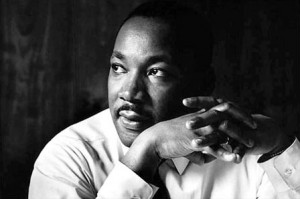Written by Lexi Baysinger. Media by Cassandra Rieke.
[divide]
Diversity is something that is hard to pin down because few people can agree on a definition. To some, diversity has only to do with race, to others it means people may look the same, but enjoy or do different things. Each definition makes sense and they both begin to ask the question of how diversity is handled. As Christians, we are called to be one body in Christ, so is our body a model of acceptance?

Photo from Seattletimes.com
Reverend Martin Luther King Jr. once said, “It is appalling that the most segregated hour of Christian America is 11 o’clock on Sunday morning.” Reverend King was completely correct, and even today I’m afraid that it still continues to be the case. Being someone who’s mixed, I’m aware of and have seen this happening throughout my life. My family attends church; my dad and I can be easily spotted because we attend the majority white church. However, when we visit my grandparents in Texas, my mom stands out quite a bit in the crowd. So it’s no surprise to me to hear that this idea of church segregation is still in effect. It‘s not necessarily a bad thing that churches are still segregated today, it just means that people like to be around people who are like themselves when they worship. I think that we lose a lot by not being integrated though. So many new things could be produced and accomplished if groups would shake off their comfort and join together. However, it’s hard to imagine, at least it is for me, a church where there’s a complete mix of all people.


It’s an idea that has to start with the upcoming generation. Strictly speaking to the Greenville College campus, diversity isn’t our strong suit. If you look into the dining commons any given time, the same types of people always sitting together. Sure, there are exceptions, but those exceptions aren’t very common. I spoke with Pedro Valentin, Dean of Multicultural affairs, and he defined diversity in terms of marginal people. His idea was not solely based on race, he only that the diversity on campus could be defined by seeing what the main Greenville College culture is and then looking at the groups that don’t necessarily fit into that mold. To Pedro, it isn’t just the job of the marginal students to find their way back to the main culture, it’s work for all of us to keep people from feeling marginalized. Feeling marginalized is a dangerous state to be in because marginalized people feel isolated, don’t connect well, and don’t feel like Greenville College could be their college. When we allow students to feel as if they’re being left out of the experience, there’s a chance that they may not return to Greenville; which means that we no longer have the opportunity to know them as children of God. When we lose this opportunity we lose the chance of gaining new relationships and seeing how they can increase the value of our community.
In order to follow the idea that the church is separate from secular culture, it means that we have to do things differently. Instead of focusing on what divides us we should focus on loving what brings us together. It is a difficult task, we are facing years of people building walls between themselves and other people. But I believe that since Jesus said we are capable of doing things that we would otherwise think are impossible, I think that we have a chance to break that mold.




























